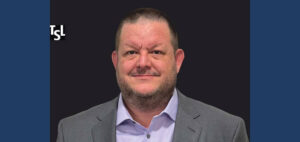The technology industry is characterized by rapid advancements and constant evolution, impacting sectors from cloud computing to AI and sustainability. Companies and professionals within this space navigate the complex challenges of technical innovations, regulatory requirements, and market trends. The industry’s pace demands a continuous learning approach to stay ahead of trends and effectively meet the needs of diverse clients. This shifting environment offers both challenges and opportunities as businesses strive to balance short-term goals with long-term visions, integrating new technologies to enhance productivity and resilience.
Rich Farrell, the Asia-Pacific Regional Director of Cybersecurity, Digitalization, and Data Centre Business at Eaton Corporation, exemplifies the expertise needed to thrive in this growing sector. With a background that spans engineering and sales, Rich strengthens his technical knowledge and strategic insights to help clients drive their technology roadmaps. His career, which began during the tech boom of the late 90s, has been marked by a shift from engineering to customer-facing roles, where he focuses on aligning immediate technological needs with broader business aspirations. His experience across the data center and cloud spaces has equipped him with a holistic understanding of industry trends and client requirements.
Rich’s comprehensive approach to technology and business strategy is advantageous to Eaton Corporation. As a leading entity in electrical infrastructure, the company emphasizes futureproofing and sustainability within its operations. Rich’s role involves recommending solutions and addressing the impacts on resources and talent retention. By staying current with industry developments and maintaining a forward-thinking perspective, Eaton Corporation, under Rich’s guidance, continues to adapt and excel in a highly competitive and ever-changing technological field.
Let’s explore Rich’s leadership journey in the fast-paced tech industry:
From Engineering to Sales
Rich never intended to enter the technology space, let alone the sales, strategy, and leadership aspects. First entering the market in the late 90’s, he was fortunate to be in the market during the tech boom, where he ended up working for some inspirational startups and larger organizations. These gave him insights and experience at a rapid pace due to the tremendous growth and learning opportunities.
He was also there for the subsequent Y2K tech bust, with this latter event making him change direction from the engineering side and move into sales, channels, and alliances. It helped to have that technical background when he moved into more customer-facing roles. He has now been involved in data centers and cloud space for over fifteen years, working with MNCs for the most part in all parts of the world.
Balancing Short-Term Needs and Long-Term Goals
A key part of Rich’s current role is to look at a client’s technology roadmap, tools, and roadmap holistically. How do all these fit together, and do they allow the customer to be more productive, profitable, and resilient? This is done by looking at the “Why” and “What”. A lot of clients know the “How,” but they’re not always up to speed with the latest micro and macro trends and all the available technology (this is the “What”).
He then helps them look at their short-term needs (i.e., move to 100% cloud or hybrid?) . Cybersecurity and Digital Transformation impacts) versus their long-term aspirational goals (i.e., is this to expand or consolidate in the region or country? Is this a blocking strategy against other competitors? (Is this something needed as part of a wider global strategy?)
Lastly, but importantly, the impact it has on current resources and talent retention and acquisition is examined. He works for a large technology-focused electrical infrastructure company as well as running his own part time, on-demand consultancy, so he will recommend products and solutions in due course.
Understanding Market Trends through Client Interactions
Rich admits that there are not enough hours in the day to keep up with all the latest news, releases, and industry reports and updates. It’s a challenge. He tends to have a mix of ways to stay up-to-date and learn about what’s happening in the industry to get the jump on others. This includes subscribing to vetted and screened industry and news publications. Anything by Data Center Frontier, Data Center Dynamics, W Media, and DC Byte.
For general economic news that is more global but current, he subscribes to Nikkei Asia and Quartz Online. Tech and people influencers like Bernard Marr for AI, Mark Butcher for sustainability, Angela Duckworth for business and personal resilience, and Nir Eyal for productivity and people management are always intriguing.
As unpopular an opinion as this may be, he finds LinkedIn invaluable.
It’s current and has many different views on one piece of news, which allows him to form his view unbiased by just one opinion. And his clients as well. Many, if not all, conversations are confidential; however, he’s able to get a picture of how, when, and where companies are expanding too.
Futureproofing and Sustainability in Tech
If one follows Rich at all on social media or his publications, they’ll note there’s a key theme between all of these: futureproofing, sustainability, and people. For example, a recent presentation he did focused on the intersection between the explosive growth of AI and adapting one’s current brownfield facility and designing their greenfield facility to meet these needs while still striving for sustainability targets (it’s very difficult to do, by the way).
He then uses this as a central theme in face-to-face presentations, interviews, LinkedIn updates, and other presentations. To be effective, one can’t just be topical and current; they need to be consistent. Clients can then use these to understand future compliance and regulatory considerations, understand where and when the next technology and geographical booms will be; and how to adequately resource for these by upskilling their current teams or
needing to increase headcount. Technology, growth, and people go hand in hand. He tries to be holistic with this approach when sharing insights and contributing to the industry.
Mastering the Leap into Sales
They say everyone has a book inside of them; Rich just never expected it to be this one! It sorts of evolved as a side project during the COVID pandemic, collating ideas and quotes he’d recorded over the years. He just added some ideas of his own based on his experience and success, and it became a book on all things sales and strategy.
This book was written for experienced business professionals who needed a refresher on sales and sales strategy and for those wanting to make the leap into sales. It’s very raw in some places; he doesn’t just talk about the positives and good times. He delves deep into how adversity builds resilience. The book also goes into detail about putting together a proven go-to-market strategy and how to capitalize on productivity while avoiding time-wasting and negative business behaviors.
Keeping Pace with the Speed of Tech
This industry moves at light speed. Rich acknowledges that one needs to be current, relevant, and constantly adding value. So, some of the challenges are ensuring one is up to speed on the latest design builds and best practices. This is especially true when trying to bridge the competing priorities of AI and Sustainability.
In his opinion, compliance and regulatory implications are also a main concern around things like digitalization and cybersecurity. These can change from country to country and even industry to industry. Then, of course, there is the people issue: with the boom in cloud and AI-driven data centers, where does one find all the necessary experienced IT, electrical, mechanical, cybersecurity, data, and software specialists and project managers? Of course, these are all-present opportunities.
He helps bridge together the technology and people’s need, along with helping organizations see three to five years into the future (as much as he is able) to plan for and preempt these challenges.
The Art of Leading People in Tech
Leading people is one of the favorite parts of Rich’s job. He believes, “When you have a great team, you have a great work life.” Being able to help individual contributors and other managers collaborate and become successful is very rewarding. Deciding whether a person needs coaching or mentoring is something he can now identify rather quickly.
He talks a lot about “playing the long game,” as in not letting small or short-term setbacks take one’s attention or energy from the long-term goal and target. He talks a lot about adversity and resilience and how one learns from these setbacks so that when they happen again, they know how to handle them and don’t derail them. Lastly, he sets his people free; by that, he means he lets them go and learn themselves, but he is there in the background should they need to seek his encouragement or advice.
Interpersonal Strengths in the Digital Age
Rich finds it amusing how the old skills are still the new skills when it comes to being a successful businessperson. Things like building one’s network, working on likeability and trust, and doing what one says they’re going to do—these will never go out of fashion and are the basis of any meaningful relationship with a client.
There is then a slew of modern-day productivity tools one can use to complement these interpersonal strengths: planning and strategy apps, and the host of AI business apps being released will become everyday go-to’s for most of us.
And it doesn’t have to be the latest, cutting-edge tools. Messaging services like WhatsApp, Telegram, or Signal; collaboration meeting tools like Zoom and Teams (if these are not abused and used as an excuse to not meet in person, and he does foresee these being replaced by or integrated with generative and inference AI apps soon).
Data-Driven Insights for Sustainability Targets
According to some industry experts, some large cloud companies’ carbon emissions have increased by 30% in just 4 years since the pandemic. And this is before the advent of purpose-built AI data centers. Where does this leave us in an age of technology-driven economies overlaid with a very real global climate crisis? It’s not about fighting against these trends; however, they’re happening regardless.
It’s about how one meaningfully tries to manage their carbon emissions, integrate renewables, and get data-driven insights to meet their sustainability targets. These are the sorts of conversations Rich has to incorporate the varying C-level stakeholders, as well as the operational and IT stakeholders. They then look at the technology available to practically and literally reduce emissions.
Upskilling for the Future
Rich has to say it: right now, AI is the most significant trend shaping the future of the tech industry. However, had one been speaking to him 12–18 months ago, he would have said sustainability.
Realistically, it’s both smashed together, which is going to bring about challenges on power availability and affordability, land availability, energy transition, and the absolute need to consider and move to previously unpopular solutions (i.e., nuclear) combined with the upskilling of current employees and the inevitable gap in talent availability.
It’s both a hugely exciting and challenging time in the tech industry. For Asia-Pacific, its time is now. With its mix of mature and emerging markets, large resource and talent pool, and access to manufacturing and labor, especially across India and south and central Asia, the region is poised to capitalize on these technology trends.


